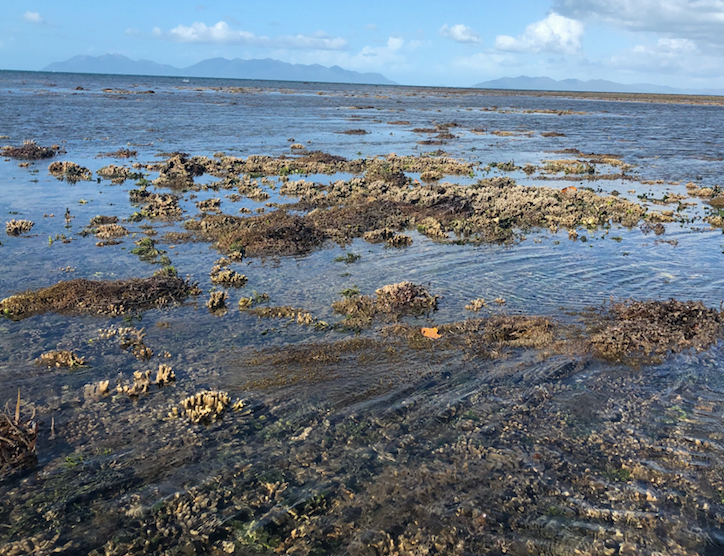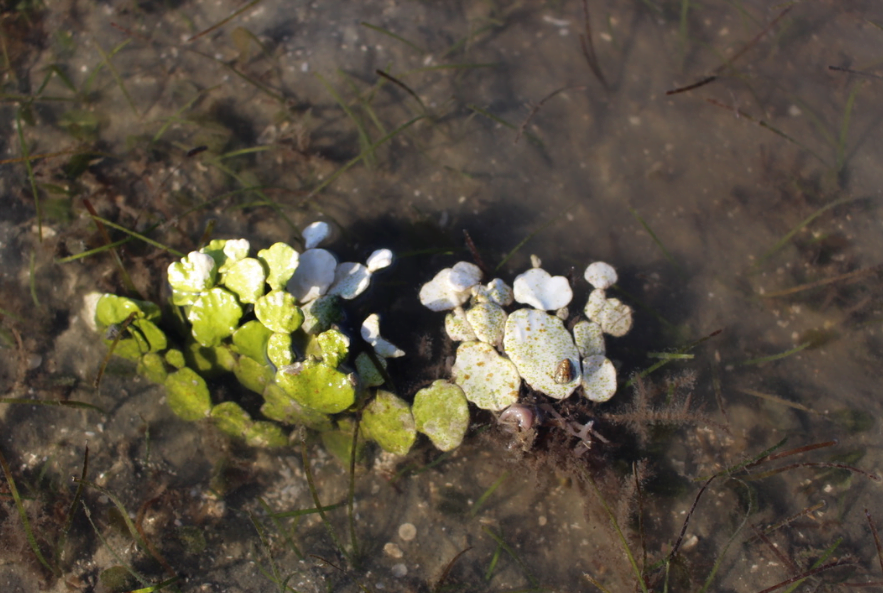The coral reef off Bowen, in North Queensland, is only dead to the 2,500 marine scientists who attended the conference in Cairns on 9th July 2012. That day, they were shown photographs of a mudflat … and told that mud now covers what was once healthy coral reef, and that this reef off Bowen is an example of the “sad decline” of the Great Barrier Reef.
The photographs shown by Terry Hughes on that day were misleading.
There is still a lot of coral off Bowen. At Bramston Reef it is more than one kilometre off shore, beyond the mudflat, and beyond the reef flat – both of which are teeming with life.
This is the littoral zone: the area between the highest and lowest tides once of so much interest to biologists. But like so much of our natural history it is being denied by the doomsayers and activists who now manage the narrative and seem completely averse to a bit of mud. They seem to expect the entire shoreline to be covered in bright corals with Nemo swimming around, but this was never the case.
Yesterday, on the very lowest tide of this month, I walked across an expanse of mudflat and then sandy reef flat before finding myself blocked by Acropora coral, which would normally be underwater. I could see massive Porites just out of the water in the distance. But the tide was turning, and so I headed back.

I took photographs along the way of the many creatures that inhabit this littoral zone – that is not all covered in mud, but some of it is and that is not bad.
For years, photographs of just the mud flat with a view across to Gloucester Island (with Stone Island to the left in the foreground, of the next video), have been paraded as evidence of “devastated coral reefs” – including by Terry Hughes at that conference.
The photographs are just of the naturally muddy, what some would call “back reef”. Beyond that is an area of perhaps 900 metres dominated by coarse carbonate sands, and beyond that corals for perhaps 800 metres to the seafloor. Yesterday I walked across the mud flat and reef flat to the corals.
The most high-profile Great Barrier Reef researchers have denied the existence of the reef flat and then the corals at Bramston reef, which they variously confuse with the fringing reef at Stone Island. It is a shame. It suggests a high level of incompetence.
Bramston reef was probably at its most expansive and spectacular about 4,500 years ago when sea levels were about 1.5 metres higher (yes, higher). That was during the Holocene high stand.
Back then there would have been rapid vertical growth of the reef. By 3,000 years before the present, the reef was probably backfilling with the sea-level fall creating fossil microatolls.
That there is limited potential for vertical growth at present, has everything to do with the lack of sea level rise. Sea levels did come up over 100 meters between about 16,000 and 10,000 years ago! The climate is always changing. Indeed climate change began long before the industrial revolution.
It is confusing to me that while sea level fall is an un-controversial fact in the technical literature, there is so much concern about the perhaps 36 cm rise since about 1880 along the Queensland coast. Indeed, what is written in the newspapers is impossible to reconcile with what is in the technical, scientific literature. This is often the case with climate issues.
At Bramston reef the difference between high and low tide at this time of year is more than three metres. There will be much more coral exposed in August, when we get the very lowest tides for this part of the Earth for this year – and I’m planning to return then, to get more photographs, including of the corals.

********
The feature image (very first photograph, at top) is of a young Porites coral growing around mud on the reef flat taken by Jennifer Marohasy on 19th April 2019.



 Jennifer Marohasy BSc PhD is a critical thinker with expertise in the scientific method.
Jennifer Marohasy BSc PhD is a critical thinker with expertise in the scientific method.

Looks good Jennifer🤔👏👏
That Mud Flat off Bowen was there when my Grandfathers came to Bowen ( The Darwen’s & Christofferson’s around 1850. I remember it being there in the 1950/60’s. It was still there in the 1970/80’s.
These greenies are full of BS.
If you go to Splitters Creek, before you get there, there is the remains of a Limestone Quarry about 30 meters tall. In fact there are Limestone outcrops all over the area which are the remains of Coral Reefs when the Sea was much higher.
Also if you have a good look at the Tide marks on the Rock Cliff faces around the area between Ayr & Bowen you will see where the sea was about 30 to 40 meters higher.
I have walked all over that area
I am officially elderly and have been boating and fishing in Port Phillip Bay near Melbourne for nearly three quarters of a century – along with several others. None of us have observed any change in tide levels (sea levels) in all those years, as observed at piers, jetties or launching ramps.
When are the dumbo media going to start differentiating between inshore reef areas and the offshore main GBR?
Jennifer, would it be an idea to put together a crowd-funded airplane charter for you take a core group of msm ‘journalists’ on a day trip over the central Qld coast, and educate them on the difference between coastal, fringing and GBR reef systems?
Then maybe next time Prof Hughes or his ilk tries to pull the “dying GBR” fantasy, they could start asking some investigative questions about the where / what / when / how / why of such alarmist claims. As proper journalists are supposed to do.
(IMHO, the very fact that some corals can grow in murky, warm inshore tidal areas is proof positive how robust these lifeforms are)
Pondering how corals live, it seems clear that long term they require climate change to prosper.
There is a great need for some expert drone filming here, Jennifer. That would show these zones far better than does a reef walk.
Thanks for those observations, Jen.
Meanwhile, 1,000 kilometres to the south, in Moreton Bay, the big areas of coral bomboras that grew during that Holocene high stand died because of the cooling since that period and so were dredged and used last century to make cement to build the capital city.
Moreton Bay was well supplied with dead coral when I was a kid as my old wooden dinghy can confirm.
JCU are in denial that coral thrives with any warming.
It.s a dynamic system suffice to say coral animals live in the photic zone of the sea and follow sunlight up and down with sea level change. The great Barrier survived the Holocene optimum when it was warmer and warming did not kill the little animals that make reefs. However, the little animal is a filter feeder and needs clean nutritious water. West Australia floods killed a lot of them and this year’s mud will hurt them too.
Terry Hughes has a pinned tweet on his Twitter homepage, with a map graphic:
“I showed the results of aerial surveys of #bleaching on the #GreatBarrierReef to my students, And then we wept.”
That shows an emotional over-involvement with his area of study. Doesn’t bode well for objective research and analysis IMHO.
The truth is the last thing that the media/pseudo-scientists want exposed because their entire argument is based on promoting false information and hoping that the listeners are stupid enough to believe them. The promoters of coral disaster really do think that Australians are stupid so if there are any Australians who disagree with this comment make it perfectly clear to the “greenies” that they no longer accept the “greenie” arguments and that they would prefer to listen to proper scientists.
Truth is something that honourable people aspire to. Lies and downright rubbish is the mark of stupid people like the greenies and they claim to represent science whilst in reality they make Australians look stupid.